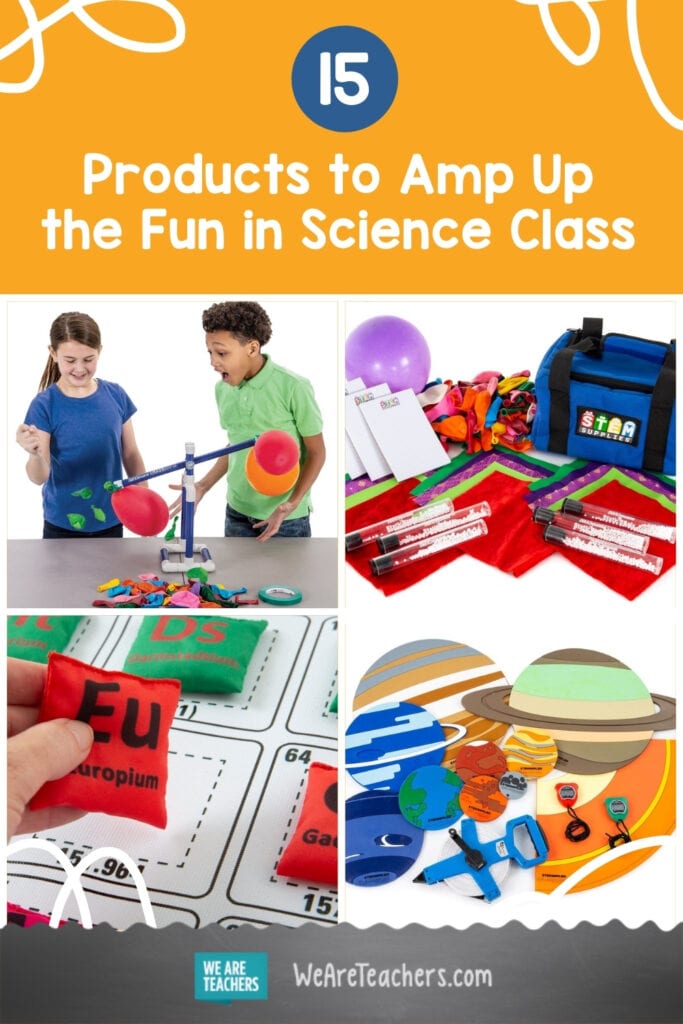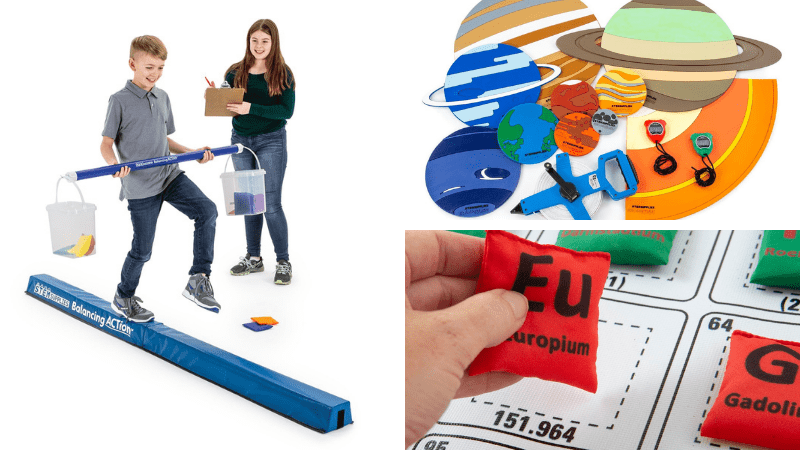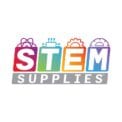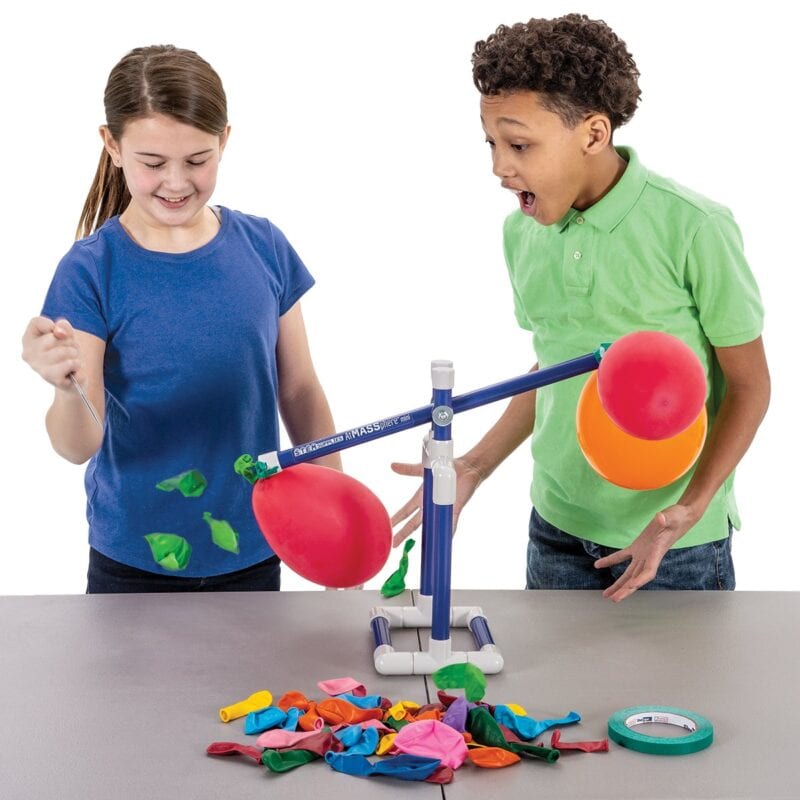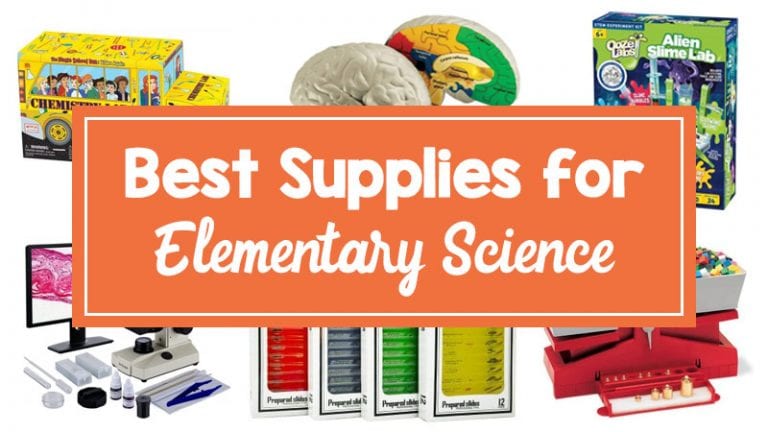Looking for a way to get your students up and moving as they learn important STEM principles? Check out these awesome kits that bring some serious fun to science learning. They’re only available from STEM Supplies, one of our favorite online sources for science classroom must haves.
1. A scale that uses balloons to teach about matter
What it teaches: chemistry, states of matter, air pressure, temperature
Air seems like it’s invisible, but is it really? With this AtMASSphere kit, students conduct experiments with balloons and a tipping scale to discover that air is made up of matter and therefore has weight. Lessons included are adaptable for students in grades K-4 and 5-8.
2. A balance beam that packs an academic punch
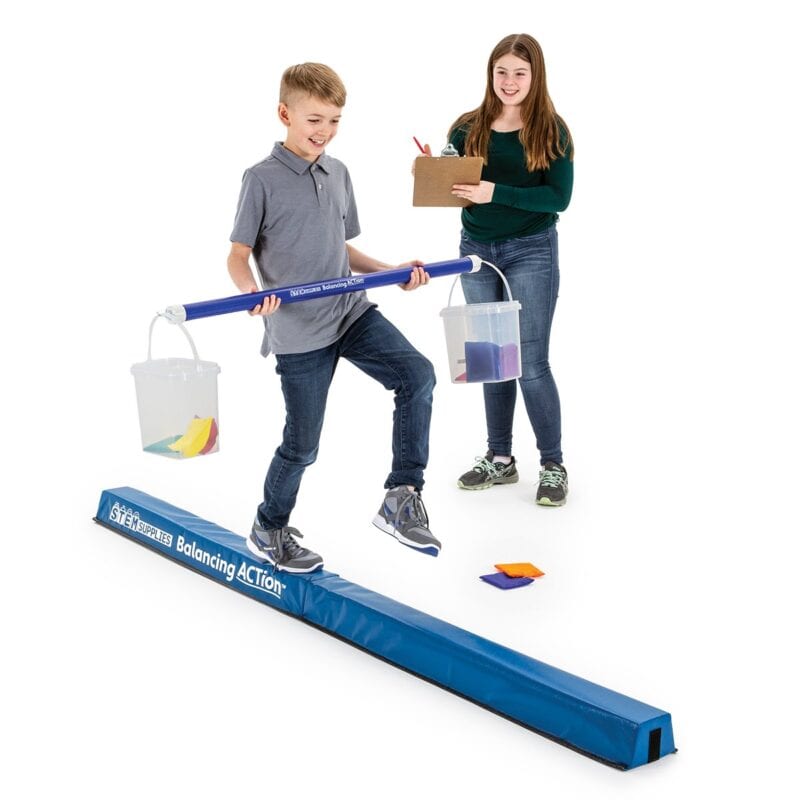
What it teaches: forces and motion, center of mass, moment of inertia
Balance science and physical exercise with the hands-on stability experiments in the BalancingACTion kit. Walking the balance beam while holding a steady bar weighted down with different materials, students learn about changing variables that define center of mass and moment of inertia. Lessons included are adaptable for students in grades K-4 and 5-8.
3. A crash test kit that students will be begging to use
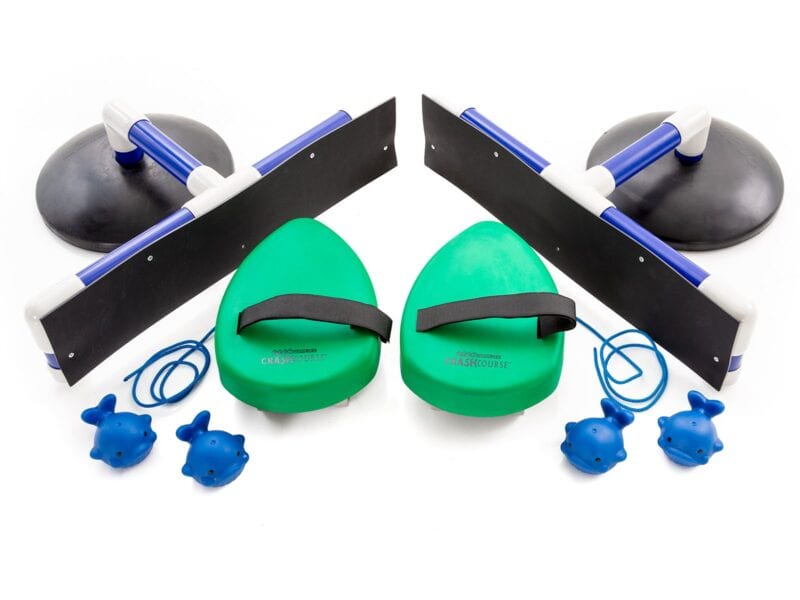
What it teaches: physics, conservation of momentum, Newton’s Laws, inertia, energy transfer
Create a crash in a controlled environment to learn about inertia, momentum, and energy. With CrashCourse, students crash green wheeled carts (seen above) together using a pull string. They then learn how distance and weight impact the outcome of a crash.
4. An easy-to-use frame for conducting drop experiments
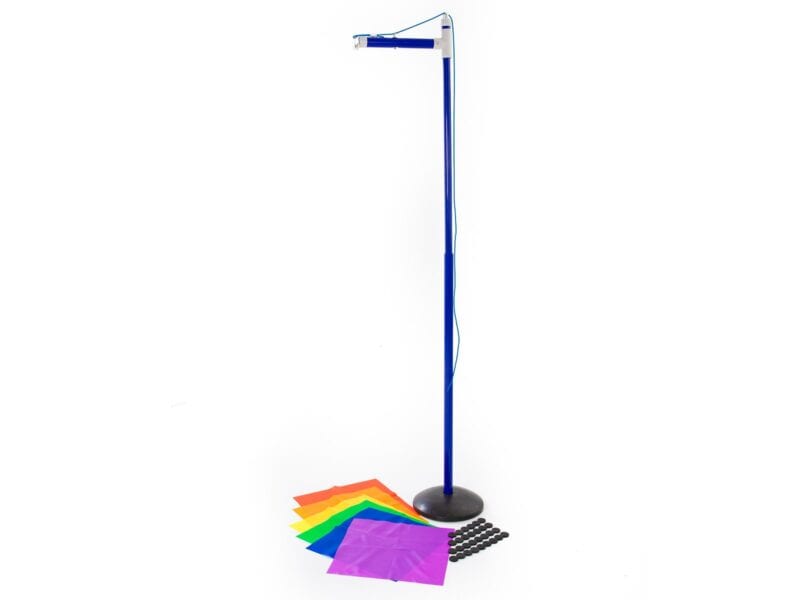
What it teaches: physics, free fall, gravity, air resistance
What makes an object fall when it’s dropped? Why do balloons drift while bricks plummet? Using this sturdy Drop Test Frame Set and parachutes weighted with different items, students conduct force and motion experiments as they explore the effects of air resistance. Lessons included are adaptable for students in grades K-4 and 5-8.
5. A scale that keeps your students guessing
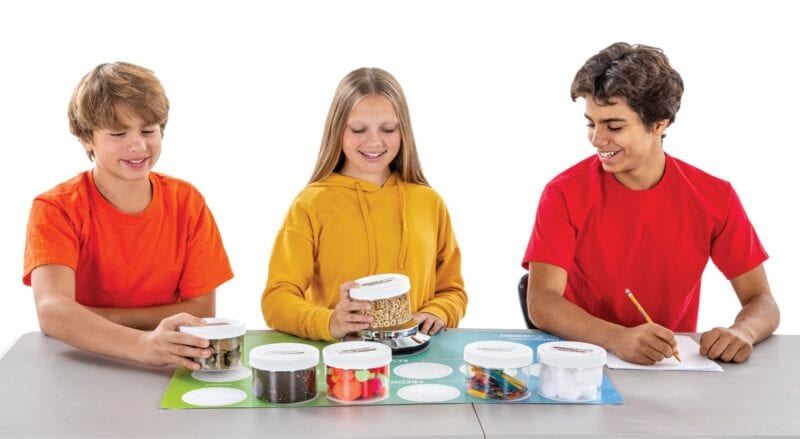
What it teaches: chemistry, matter, density, volume, mass
Discover the roles mass and volume play when determining the density of items. The EvaluWeight Kit includes six containers, a scale, and a results mat. Students will fill the containers with different items and make predictions about their mass. Then, they will test their predictions by weighing each container. Older students can move on to the next challenge and calculate the volume of the containers and density of the materials inside. Lessons included are adaptable for students in grades K-4 and 5-8.
6. A pulley system your students will want to give the heave-ho
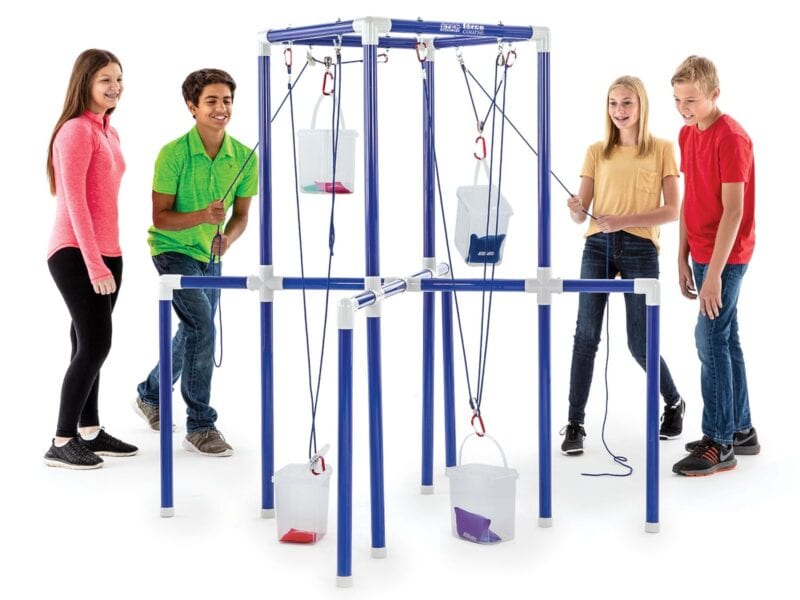
What it teaches: physics, simple machines, pulleys
With the ForceCourse Pulley Set, students discover how different pulleys produce different mechanical advantages and compare three major types of pulley systems used frequently in real-world design—fixed, movable, and compound pulleys.
7. A catapult your students will have a blast launching
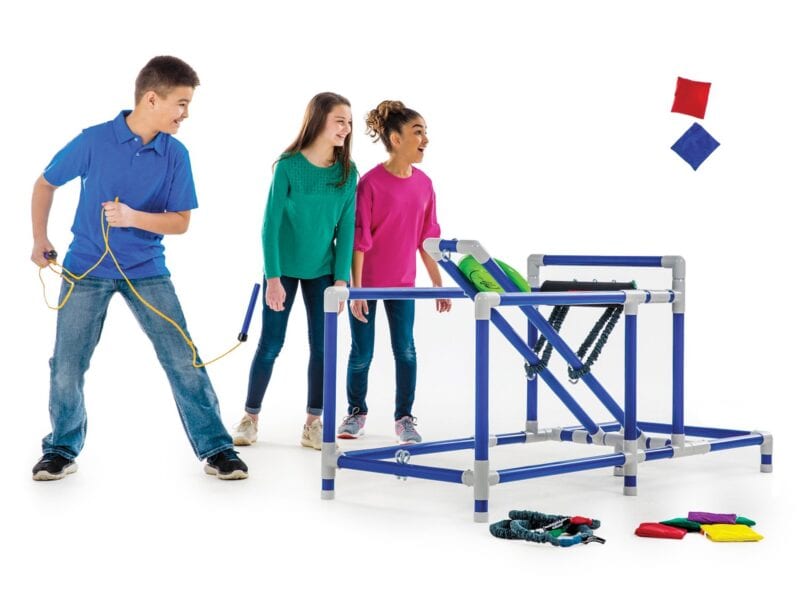
What it teaches: physics, projectile motion, simple machines
Explore why the catapult has been used as a tool for thousands of years with this fun, life-size, interactive version. Your students will have a blast launching bean bags as they learn about the concepts of force, angle, and resistance with the LearnLauncher Catapult Set.
Recommended for students in elementary school and up.
8. A periodic table with a hands-on twist
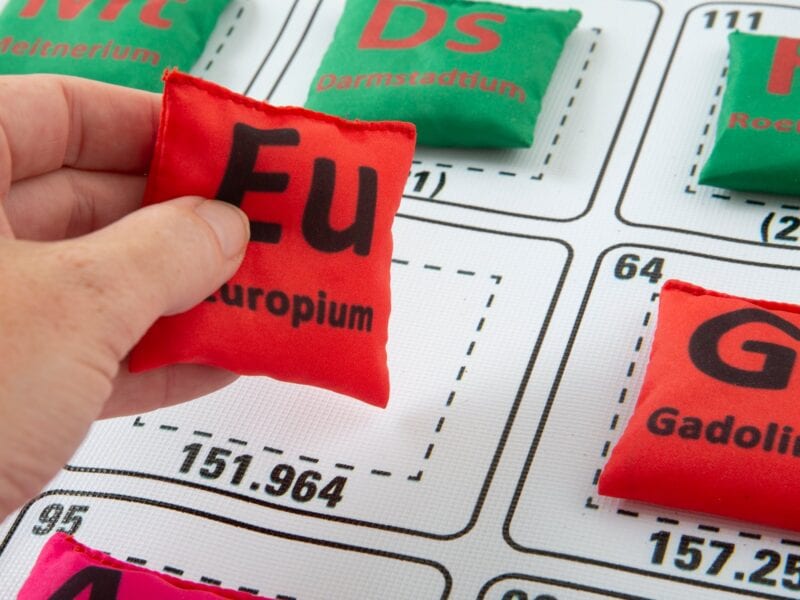
What it teaches: chemistry, periodic table, elements
This kit puts an active, kinesthetic twist on learning the elements of the periodic table. One lesson in the Periodic Table Relay Race Kit has students use beanbags printed with element information (included) to identify elements they are familiar with by placing them on objects or pictures of items that contain those elements. Another lesson involves challenging groups or the whole class to an elemental relay race.
Recommended for students in elementary school and up.
9. Personal parachutes that teach drag and motion
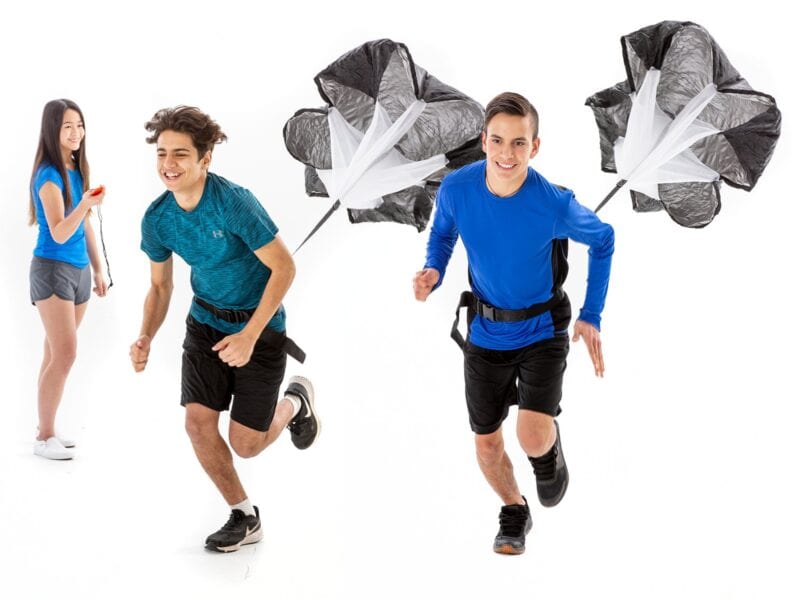
What it teaches: drag/resistance, forces, physics
Run a ResistanceRace against the force of air with this kinesthetic STEM activity. Wearing 1 of 2 speed parachutes, students sprint to feel the force of drag and the impact that has on their motion. Students work in teams to conduct experiments, record data, and analyze motion based on results. Lessons included are adaptable for students in grades 2-5 and 6-10.
10. A slingshot set that meets the mark

What it teaches: physics, projectile motion, simple machines, resistance
Your students will love conducting hands-on investigations with the SlingStudy Slingshot Set. Launching beanbags with the oversized slingshot, students will explore the concepts of accuracy versus precision, force, and trajectory by changing one variable at a time. Lessons included are adaptable for students in grades K-4 and 5-8.
11. A solar system kit that puts things in perspective
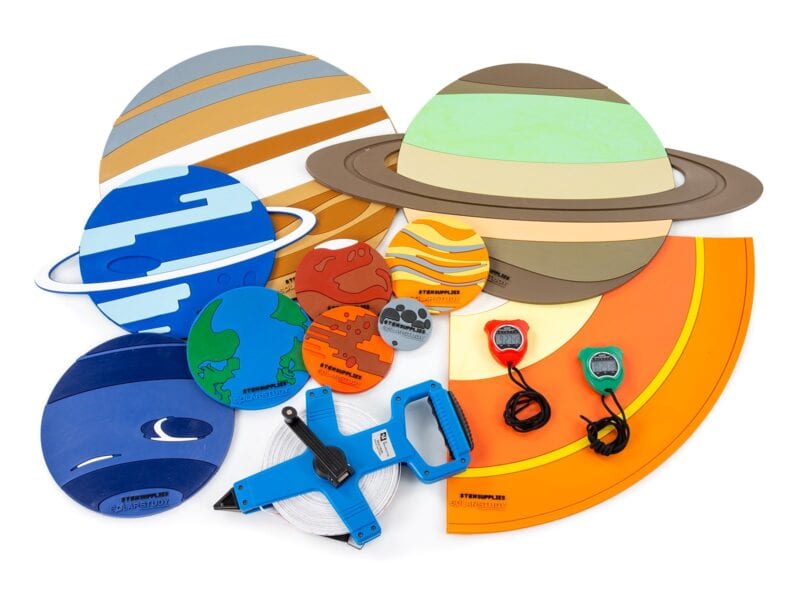
What it teaches: scale of the solar system, planetary attributes
Create a scaled-down version of the solar system while learning about the planets and the distance between them with the colorful SolarStudy Set. Students will first learn about the size and attributes of each of our 8 planets, then work hands-on to create an accurate model of the solar system. Older students will discuss the role of gravity, what causes other objects to orbit a planet, and calculate the velocity of orbiting planets. Stopwatches are included so students can run a race between planetary objects to get a sense of object distances within the universe. Lessons included are adaptable for students in grades K-4 and 5-8.
12. A static electricity kit that will have their hair standing on end
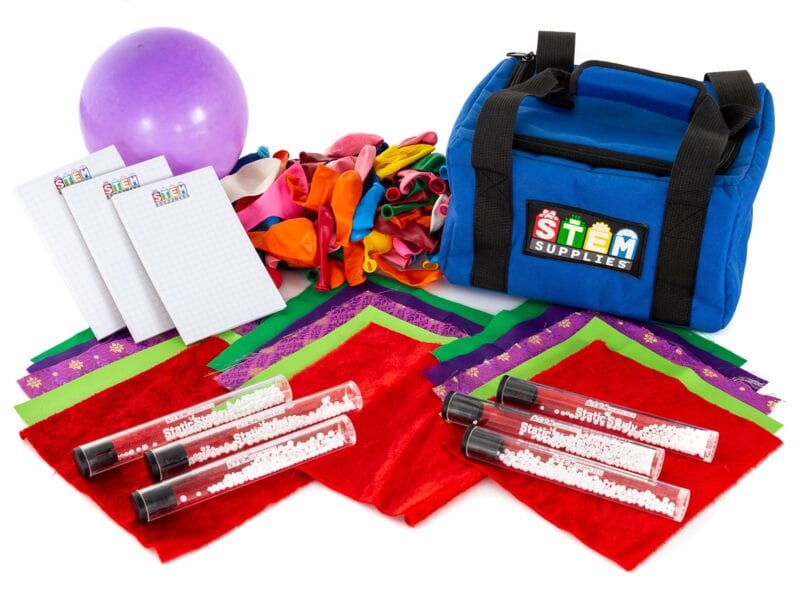
What it teaches: static electricity, electrical forces, materials
Dispel the magic of static electricity with scientific observation. With the StaticStudy Electricity Kit, students will rub different textiles on plastic tubes to see which ones build the electrical power to move objects like balloons and paper! They’ll explore why electrical buildup occurs with some textiles more than others and carry out scientific experiments to back up their hypotheses with observations. Lessons included are adaptable for students in grades K-4 and 5-8.
13. A foam glider kit that will have them soaring high
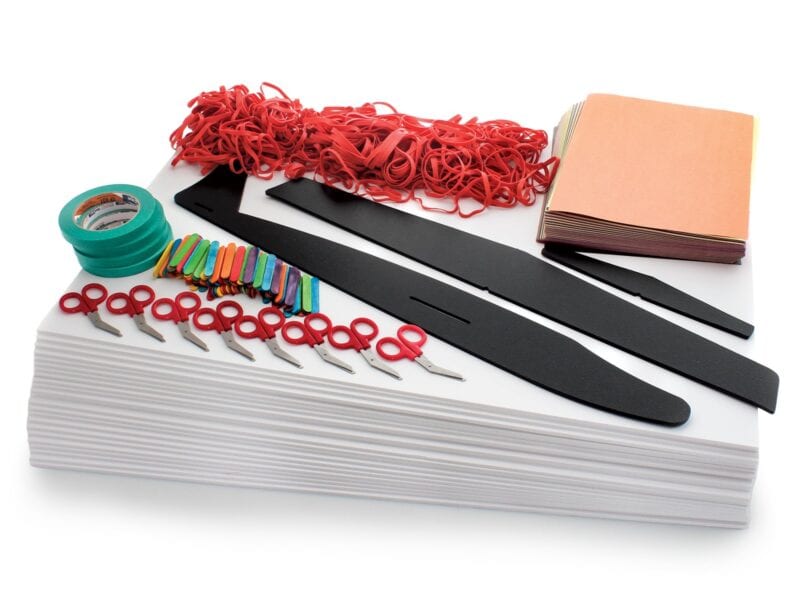
What it teaches: aerodynamics – lift, drag, gravity, thrust
Learn about the four principles of flight by constructing, modifying, and observing a foam glider with the TestFlight Set. First, students will build a foam glider using the plastic templates provided. Then they’ll let their creativity soar by attaching paper, rubber bands, and wooden dowels anywhere on their glider to alter its behavior during flight. Lessons included are adaptable for students in grades K-4 and 5-8.
14. An instrument that explores the science behind sound and music
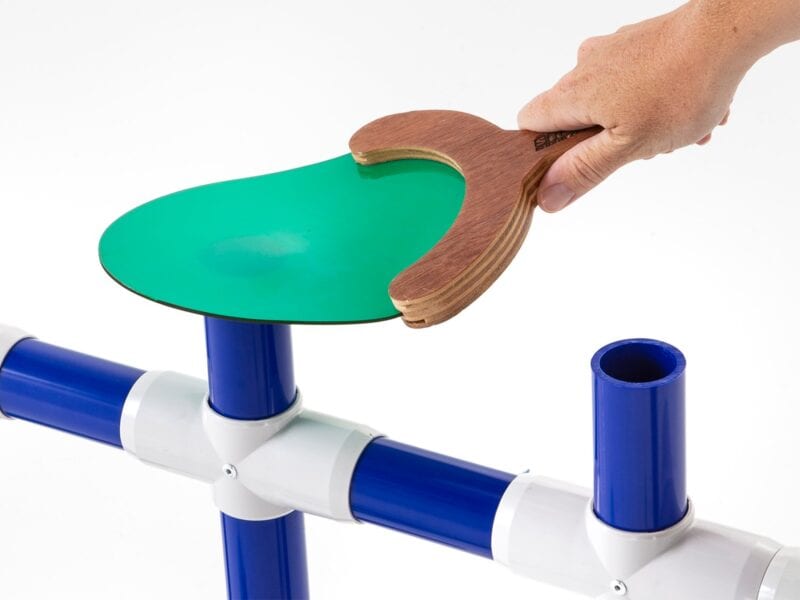
What it teaches: sound, waves, frequency, pitch
The hands-on activities in the ToneTest Sound Wave Kit challenge students to use soft paddles to hit the tops of different length tubes on an ABS frame, then conduct experiments to study how the length of each tube changes the sound that is produced. They’ll learn that sounds result when a vibrating object causes the surrounding medium to vibrate too! Recommended for students in elementary school and up.
15. A kit that harnesses the power of the wind
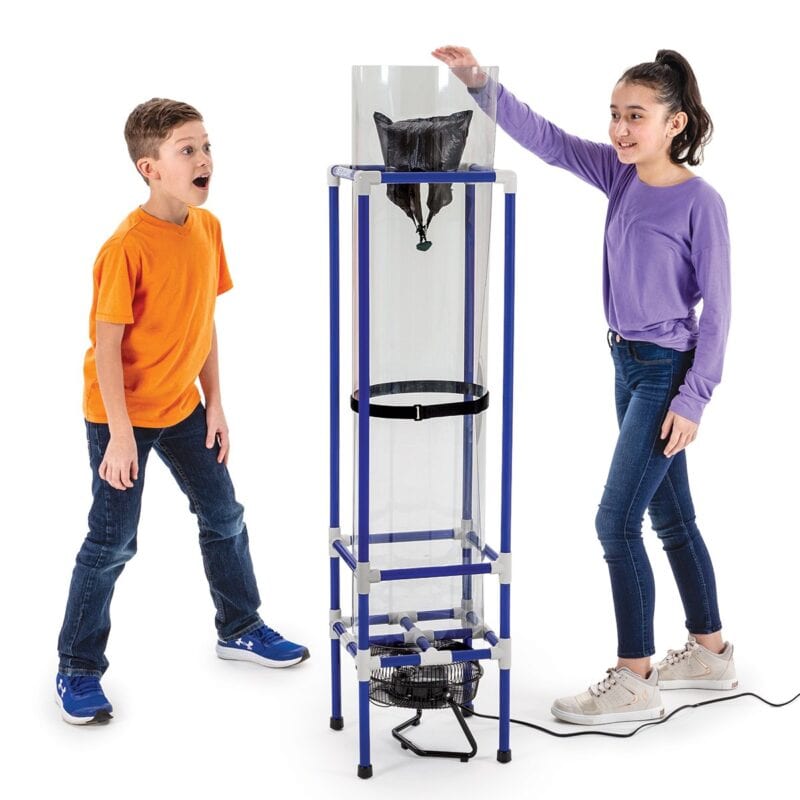
What it teaches: airflow, drag, forces, lift, turbulence
Students will see the tangible effects of moving air as they investigate with the Wind Tube Kit. As they drop different items into the tube, they’ll observe how objects tumble around in mid-air in reaction to a wind tunnel fan and how different object attributes (like material, weight, and aerodynamics) affect the object’s behavior. Recommended for students in elementary school and up.
Looking for more science classroom must haves? Check out STEM Supplies for kits that explore magnetism, solar energy, and more.
